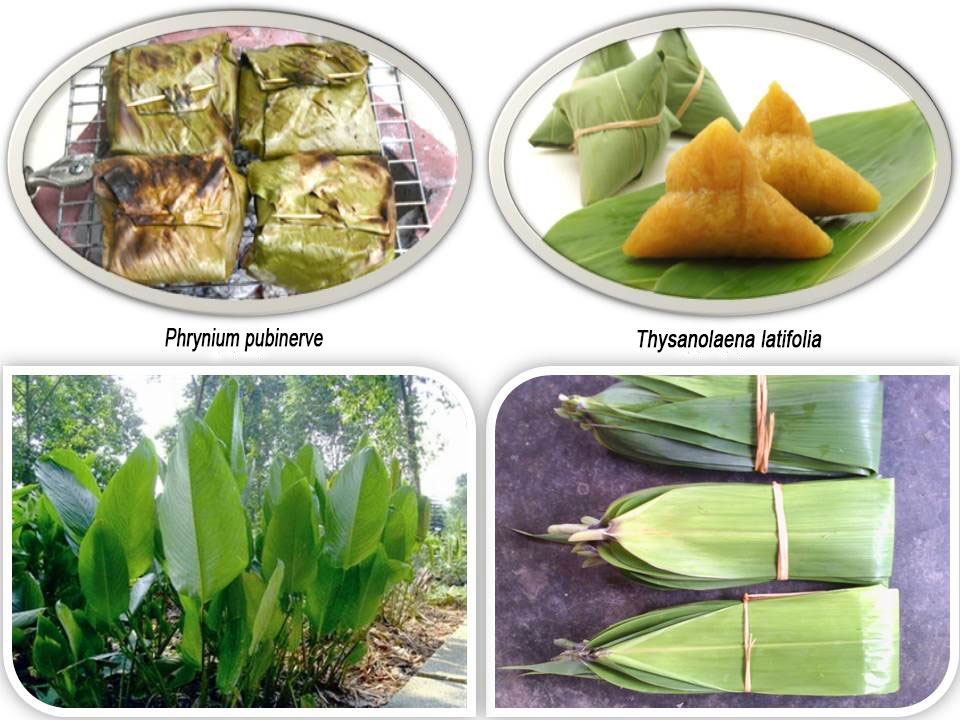In the high humidity and temperature of Xishuangbanna, food deteriorates rapidly. So, indigenous people have accumulated a lot of traditional knowledge on the utilization of local plants to preserve food. The leaves of Phrynium pubinerve Blume (Marantaceae) and Thysanolaena latifolia (Roxb. ex Hornem.) Honda (Poaceae) have been used as natural food packaging materials by ethnic minorities in Xishuangbanna. The use of P. pubinerve leaves as packaging materials and their apparent antiseptic function was reported in the earliest flora of China in 304 AD. The leaves of P.pubinerve and T. latifolia have also been used as traditional remedies by Dai and Hani people in Xishuangbanna for the relief of coughs, the abatement of fever, detoxification and stomach disorders. Despite their wide and long history of usage, there has been no report on their chemical composition or on the related bioactivities of their essential oils and crude extracts. Prof. HU Huabin and his students of Xishuangbanna Tropical Botanical Garden (XTBG) conducted ethnobotanical studies on P. pubinerve and T. latifolia. They aimed to justify their traditional knowledge by investigating the chemical composition, and the antioxidant and antimicrobial activities, of the essential oils from the leaves of P.pubinerve and T. latifolia. The essential oils were collected by simultaneous distillation extraction with a yield of 0.025% (w/w) and 0.030 % (w/w) on a dry weight basis for P. pubinerve and T. latifolia, respectively. By using gas chromatography/mass spectrometry (GC-MS) analysis, the researchers identified 46 and 21 components, representing 88.57–93.44% of the essential oils of the two species. The essential oil samples were found rich in aliphatic alcohols, aromatics, oxygenated monoterpenes and diterpenes. All essential oil and ethanol extract samples showed antioxidant activity in the DPPH (2, 2-Diphenyl-1-picrylhydrazyl radical), ABTS (2, 2-Azobis-3-ethylbenzthiazoline-6-sulphonic acid ) and FRAP (ferric reducing antioxidant power)assays. The essential oils showed a potential reducing antioxidant power and were active against all tested pathogenic bacteria and spoilage organisms. Moreover, the essential oils had much broader antimicrobial activities than the ethanol extracts and showed notable antimicrobial activity against seven microbial strains. The results were consistent with the traditional use of both species as naturally biodegradable package materials with antiseptic functions. Furthermore, their high antimicrobial activities against pulmonary infection-causing bacteria and food-borne pathogens agreed with the traditional use of both taxa as indigenous remedies for the relief of coughs, detoxification and stomach disorders. The researchers thus concluded that P. pubinerve and T. latifolia are promising green preservatives for packaging, medicinal and food industry. The study entitled “Essential oils composition and bioactivities of two species leaves used as packaging materials in Xishuangbanna, China” has been published online in Food Control. 
Leaves of Phrynium pubinerve and Thysanolaena latifolia and their uses (Image by HU Huabin) |

